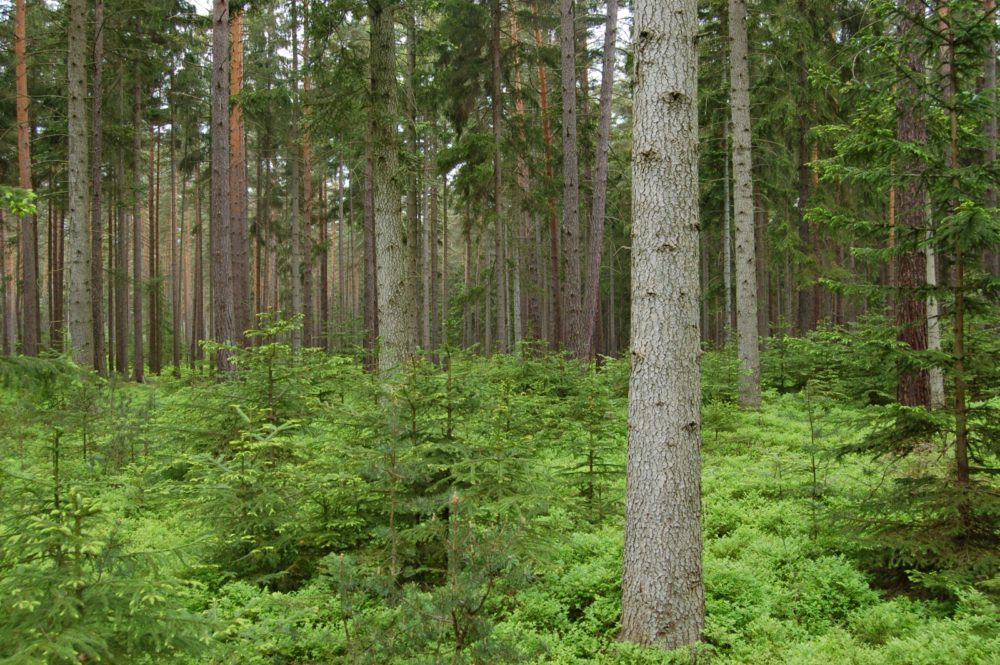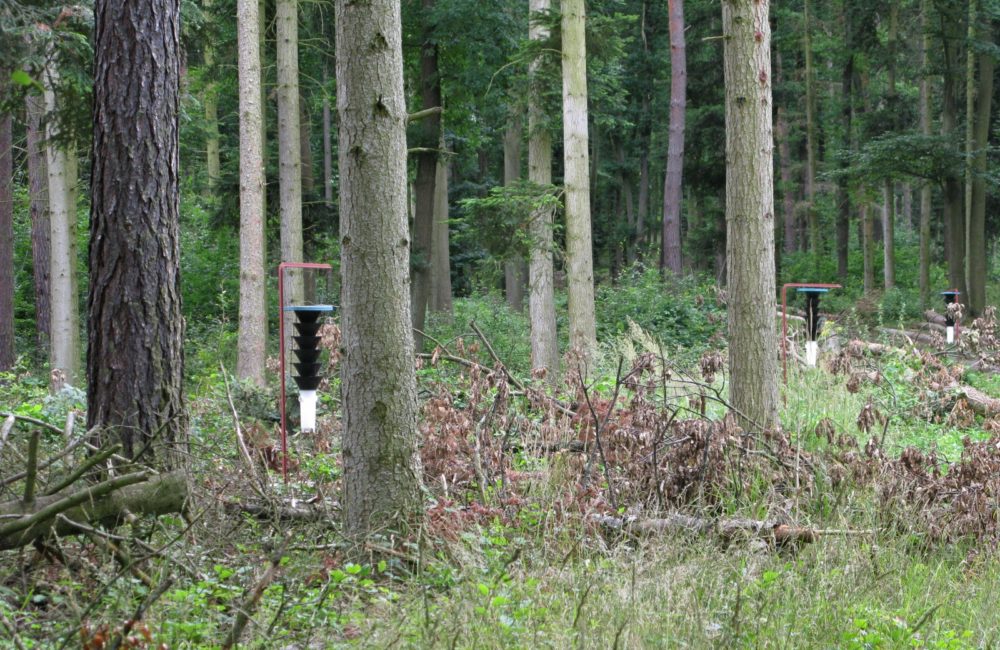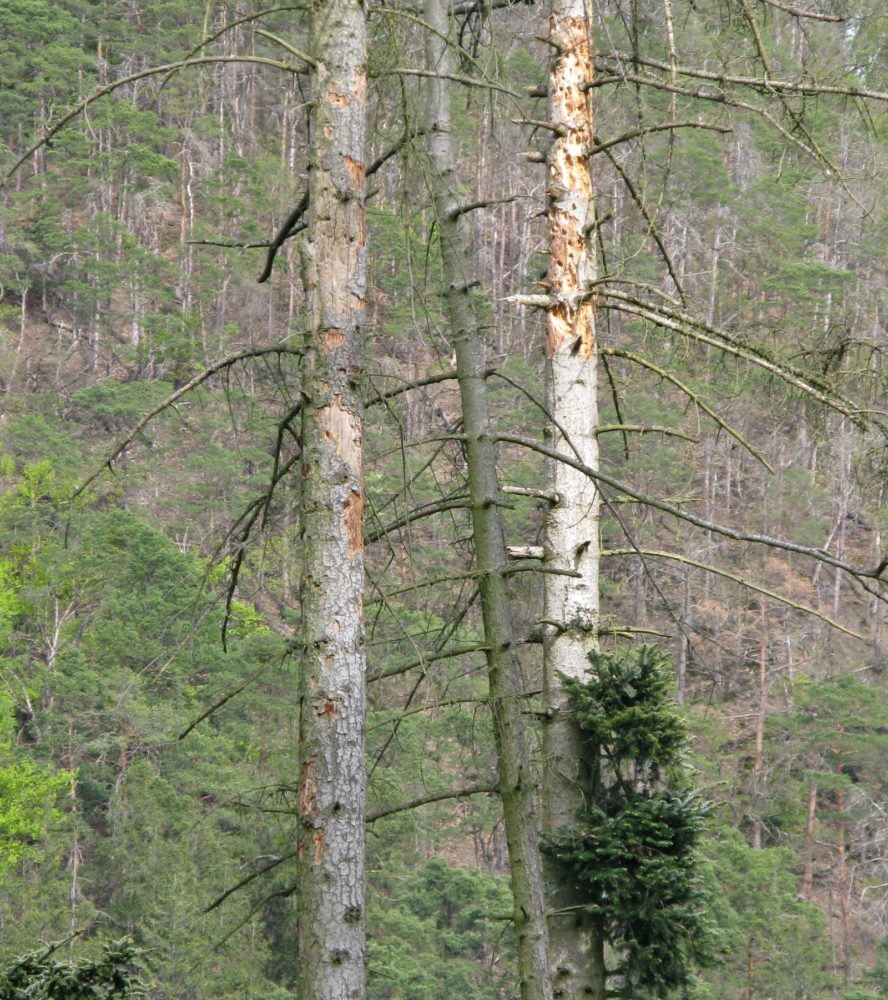Also, silver fir has her bark beetles, too
The Central European coniferous forests have been facing increased pressure from biotic harmful agents, especially bark and wood insects in recent years. As a result, the stands are weakening or disintegrating, especially the Norway spruce and Scots pine, which are among the most dominant conifers. However, little attention has been paid to the silver fir, which only accounts for 1.2% of the forests. The expected natural representation of silver fir was about 20%, and the recommended representation is almost 8%.
 Silver fir is a significant species in Europe, playing an essential role from an economic (woodworking industry), social (recreational function of fir forests, use for air quality monitoring), as well as ecological (soil and biodiversity protection) standpoint.
Silver fir is a significant species in Europe, playing an essential role from an economic (woodworking industry), social (recreational function of fir forests, use for air quality monitoring), as well as ecological (soil and biodiversity protection) standpoint.
Photo: Forest stand with a substantial proportion of silver fir, author Jan Řezáč
Since the 1970s, the area of fir stands and the number of this tree species in Central Europe have significantly decreased due to various factors. These include emissions of sulphur and other pollutants, soil acidification, lack of genetic variability, various pathogens (such as fungi Heterobasidion annosum and honey fungus), parasitic organisms (like white mistletoe) that reduce tree vitality, weather fluctuations (such as extreme temperature periods and dry spells), unsuitable forestry and hunting management, and insufficient forest protection.
Additionally, the overpopulation of ungulates severely limits or even prevents the increase in the proportion of fir.
Damage caused by the bark beetle is also among the significant negative factors affecting the prosperity of fir trees. In the territory of Central Europe, among the bark beetles that cause the firs damage are the bark beetles of the genus Pityokteines: Pityokteines curvidens (silver fir bark beetle); bark beetle P. spinidens and P. vorontzowi (European fir engraver beetle), possibly also Cryphalus piceae (white spruce bark beetle).
Scientists from the Forest Protection Service, FGMRI (VÚLHM, v. v. i.) have addressed the issue of bark beetles on fir. Their latest findings have been published in the article titled “Occurrence and Importance of the Bark Beetles of the Genus Pityokteines in Silver Fir (Abies alba)” /Výskyt a význam kůrovců rodu Pityokteines v porostech jedle bělokoré/, in the journal Reports of Forestry Research 3/2023. In their study, the scientists evaluated the occurrence of bark beetles of the genus Pityokteines in selected regions of the Czech Republic, assessed the threat to stands grown in different climatic conditions, and evaluated the abundance of individual species.
The negative impact of three species on the health and survival of fir trees in Europe became increasingly evident after 2000. These species tend to target weak and dying trees, and multiply rapidly, especially in areas affected by storms, such as upheavals and breaks. Bark beetles, specifically those from the Pityokteines genus, are particularly harmful, resulting in the death of up to 70% of the trees they attack. Furthermore, beetles hatched from a single tree can potentially endanger up to 56 trees in the following year.
 Photo: WitaTrap 5 segment pheromone traps, author Jan Liška
Photo: WitaTrap 5 segment pheromone traps, author Jan Liška
Despite the mentioned risk factors, it is necessary to intensify efforts to preserve fir trees in forests even during climate change. This is because, according to dendroecological studies, fir trees exhibit greater resistance and resilience to drought compared to other trees like spruce, beeches, and larches, especially at higher altitudes.
In many Central European countries, fir cultivation can help maintain high productivity levels in the future. As a late successional species, it also has the potential to expand its area of occurrence in Europe due to climate change.
To protect the silver fir, appropriate management methods must be adopted. Changing climate conditions will lead to an inappropriate distribution of precipitation throughout the year and a strong rush of wind, causing mechanical damage and increased bark beetle attacks when the trees are weakened by drought.
The researchers conducted their study in four locations: Starý Samechov (central Bohemia, Kutná hora district), Nižbor (central Bohemia, Beroun district), Tábor (southern Bohemia, Tábor district), and Runářov (central Morava, Prostějov district).
All of the surveyed areas are situated in regions with extensive fir tree populations, and provide suitable ecological conditions for this particular tree species. In all the locations, there was a noticeable increase in the number of fir trees dying due to bark beetle infestations. The areas were deliberately chosen from different biogeographic regions of the Czech Republic. Pheromone traps were employed to capture the bark beetles, which were placed at the edge of the stands.
The occurrence of P. vorontzowi (European fir engraver beetle) was more numerous at all locations, with the extent of infestation throughout the entire tree crown (crown part of the stem and branches), than bark beetle P. spinidens which is considered the most important bark beetle damaging fir.
The presence of P. vorontzowi (European fir engraver beetle) mainly in the branches and tops of firs may indicate the health of the trees. This is because the crown of the tree may be weakened due to drought, but there is still enough resin in the trunk to defend against bark beetles such as bark beetle P. spinidens, that fly onto the stem.
 Photo: The silver fir attacked by bark beetles in the crown part has enough resin in the lower parts of the stem for defence, author Jan Liška
Photo: The silver fir attacked by bark beetles in the crown part has enough resin in the lower parts of the stem for defence, author Jan Liška
The relatively low captures of both species were due to improved climatic conditions. The dry season in 2018 and 2019 was followed by years with more favorable rainfall, resulting in the regeneration of fir trees. As a result, overpopulation has already subsided.
The researched sites showed significant differences. The highest occurrence of P. vorontzowi (European fir engraver beetle), which was almost twice as much as the second most numerous locality Runářov, was found at the Nižbor locality. This can be explained by the regional climate differences. Nižbor is located at the lowest altitude with higher average temperatures and lower average precipitation compared to the other locations.
Low rainfall and higher temperatures can cause an increase in the number of generations for bark beetles. This leads to earlier spring swarming, stronger aggregation, and lower defence capabilities of tree species. As a result, bark beetles can more easily attack the trees.
The rate of infested trees at individual locations corresponds to the number of catches. Infested trees were most numerous in Nižbor and St. Samechov, while the occurrence was low in the Runářov and Tábor localities.
The difference in the number of individuals caught year-to-year can be explained by the overall improvement in the health of the firs. This improvement occurred after the precipitation returned to normal following the dry period of 2015-2018.
The scientists’ study confirmed the harmful occurrence of bark beetles, specifically the Pityokteines genus. P. vorontzowi (European fir engraver beetle) and bark beetle P. spinidens were both commonly captured in installed pheromone traps.
During the study, the researchers found that P. curvidens (silver fir bark beetle), was not present in any of the infested wood samples. This confirms the observations made during field visits. The study also revealed that over the past few decades, there has been a significant decline in the population of this species in the Czech Republic. This is in contrast to the situation fifty years ago when the hemlock weevil was a common species in many areas of the country. The exact reasons for this decline are unknown, but one possible explanation is the reduction of old fir stands, which are the most suitable habitat for this species.
The comparison of localities revealed that fir trees, like other tree species, have a relationship between the number of individuals and climatic characteristics such as higher temperature and lower precipitation.
The study was created within the framework of projects QK1910292 “Procedures for the support of silver fir in the Czech Republic forest management” (Postupy pro podporu jedle bělokoré v lesním hospodářství ČR) and QK22020062 “Identification of surviving individuals of forest trees in disaster areas, their rescue and research on their resistance” (Identifikace přeživších jedinců lesních dřevin na kalamitních plochách, jejich záchrana a výzkum jejich rezistence).
Paper „Occurrence and Importance of the Bark Beetles of the Genus Pityokteines in Silver Fir (Abies alba)” /Výskyt a význam kůrovců rodu Pityokteines v porostech jedle bělokoré/ can be downloaded here.
Authors of paper: Miloš Knížek, Jan Liška, Adam Véle, FGMRI (VÚLHM, v. v. i.), Strnady, e-mail: knizek@vulhm.cz
Prepared by: Ing. Jan Řezáč, FGMRI (VÚLHM, v. v. i.), e-mail: rezac@vulhm.cz
